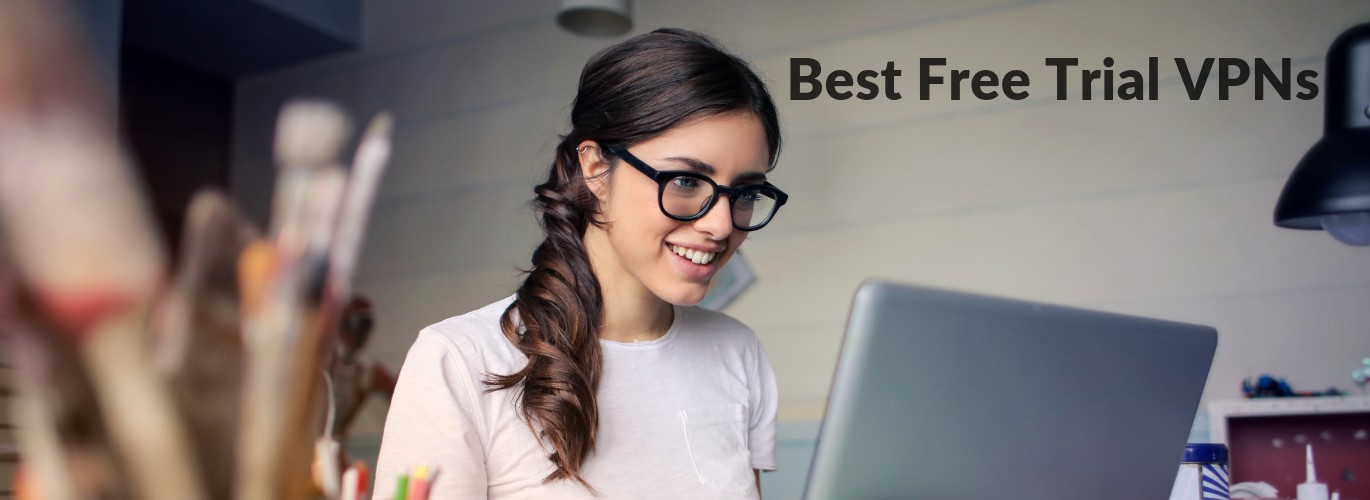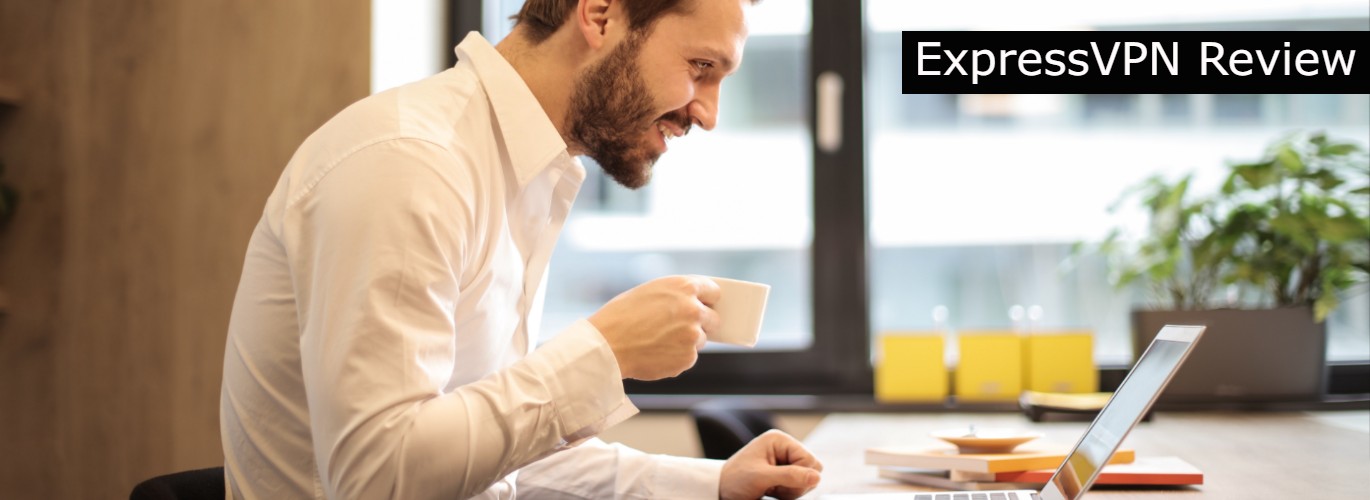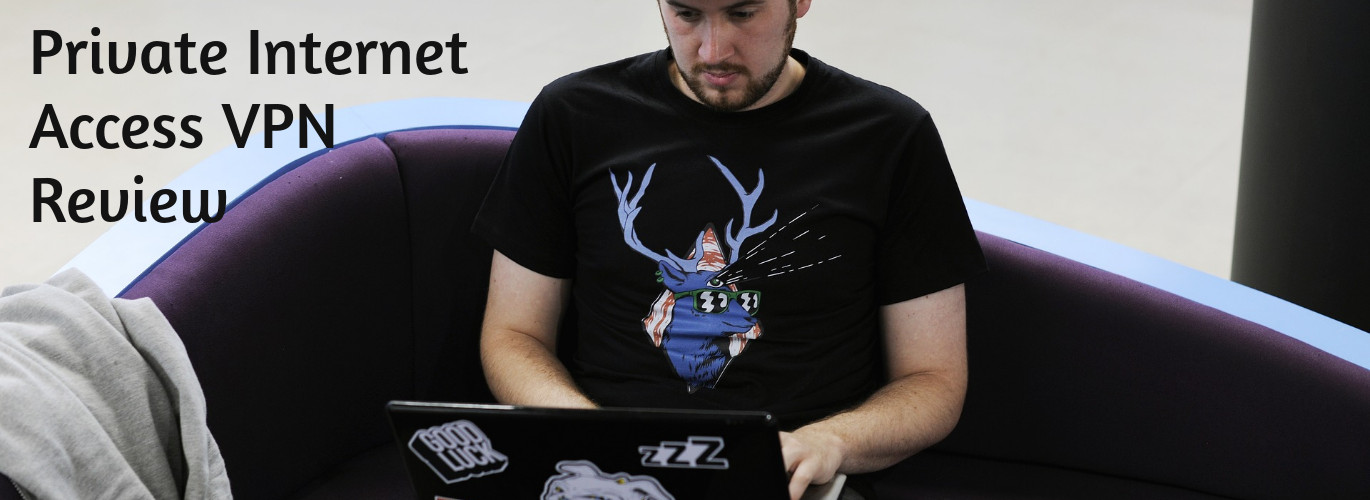
In fact, it’s probably one of the most popular VPNs around—and I don’t just mean the amount of users it has.
It’s pretty well received:

And it has a reputation for being a great bargain with lower than average prices.
But VPNs DO get overhyped. And with so many options out there, should you really invest in Private Internet Access (PIA) just because it has a solid reputation?
Don’t worry, my friends. Despite having heard of Private Internet Access for a while, I finally took it for a test drive.
And after using it extensively, I feel pretty confident in my take. Keep reading, and all will be revealed!
Starting us off:
Performance
Performance is one of the few things that I can guarantee everyone reading this cares about.
Even those of us who don’t care much about having the fastest speeds, still don’t want to have terrible speeds.
So how solid is Private Internet Access VPN? Is it fast? Stable? Both?
Let’s start with a speed test. Here’s my home’s WiFi’s speed WITHOUT Private Internet Access:
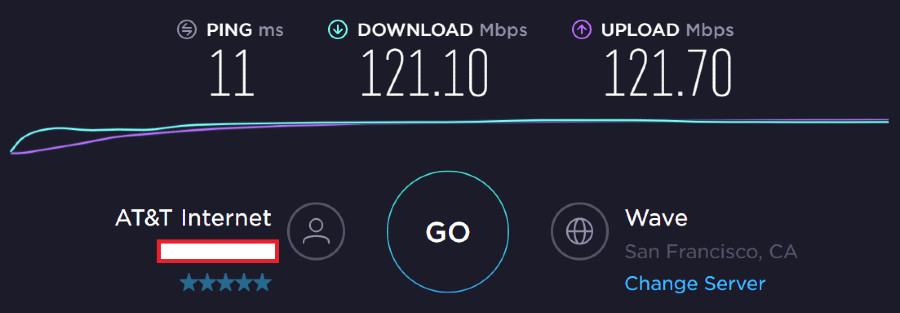
Holy smokes, what a good day for my internet.
And here are the numbers WITH Private Internet Access:

Okay, yeah—it’s a steep drop.
But the truth is, when internet speed hits a certain threshold, even the best VPNs are going to have a considerable drop.
I tested out a bunch of different servers, and frankly, all of them were fast.
They couldn’t rise over the 80 Mbps upload or download speed threshold, but many of the American servers were near that.
Even servers halfway around the world had relatively good speed tests (around the 50 Mbps mark). So all things considered, Private Internet Access is one of the best-performing VPNs I’ve used in a while.
And in daily use, yes, it’s absolutely stable.
Now, obviously a lot of VPN customers aren’t only looking to browse the internet in airports or cafés.
A lot of people want to stream content that’s geolocked. So I decided to test out PIA’s ability to access streaming services in different countries.
Here’s what happened when I tried to access Belgian Netflix:
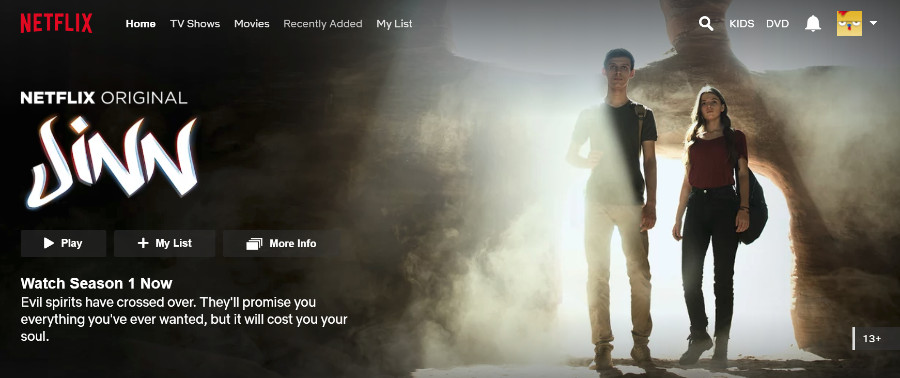
It worked perfectly.
In fact, I didn’t even have any issues with playback. The whole site was perfectly responsive, with very little lag time.
Different servers around the world have also worked for me, so I’d say Private Internet Access is in fact very solid when it comes to streaming.
Which leaves the other common VPN use—torrenting.
I connected to the fastest server and downloaded a comic book version of Do Androids Dream of Electric Sheep:
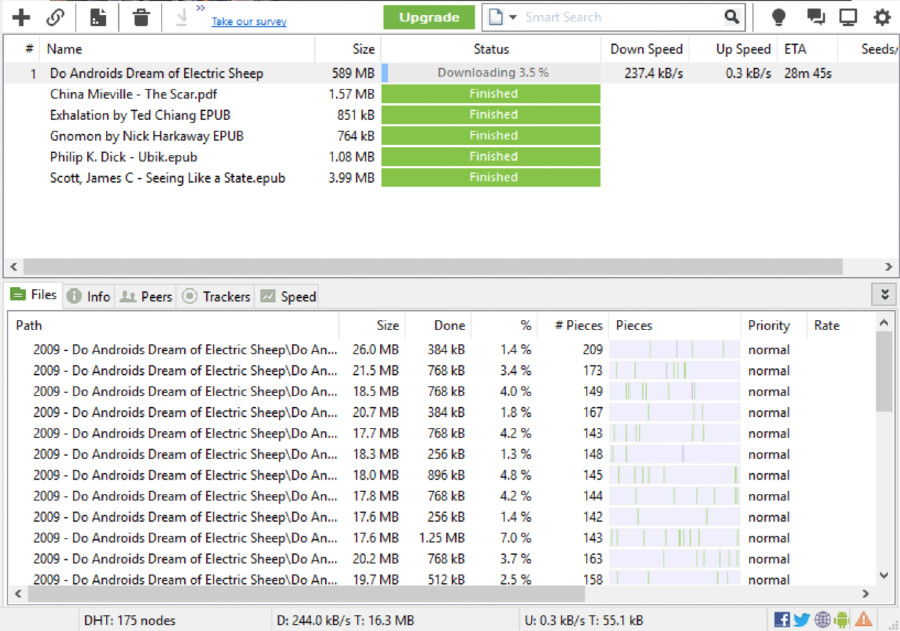
To be honest, it wasn’t as fast as I thought it should be. It’s true that I’ve been using an outdated uTorrent software, but it shouldn’t play that big a role.
Obviously, small files such as ebooks still downloaded quickly. But relatively, they weren’t so fast.
So when we put all of this together, it’s a bit of a mixed bag. On paper, Private Internet Access has subpar speeds.
But in reality, speed tests with other top VPNs in my home have revealed comparable or even worse speed drops.
So in my book, PIA is one of the really good performers.
And in daily use, it certainly feels that way, especially when it comes to watching videos and streaming.
But torrents, I’ve got to say, haven’t run as smoothly with PIA as I had hoped. The speeds just don’t keep up, it seems.
Overall, Private Internet Access strikes me as really good on performance. But as you know, that’s far from the end of the story.
Up next:
Ease of Use
This category is surprisingly overlooked. So much of what turns people away from VPNs has to do with what might seem superficial—the user interface and user-friendliness.
VPNs will sometimes be way too simple or too complicated.
How does Private Internet Access do?
I don’t want to spoil it, but I think it does superbly.
But I’m getting ahead of myself. Let’s start at the beginning.
When you first move to make a payment, you’ll be greeted with a host of payment method options:
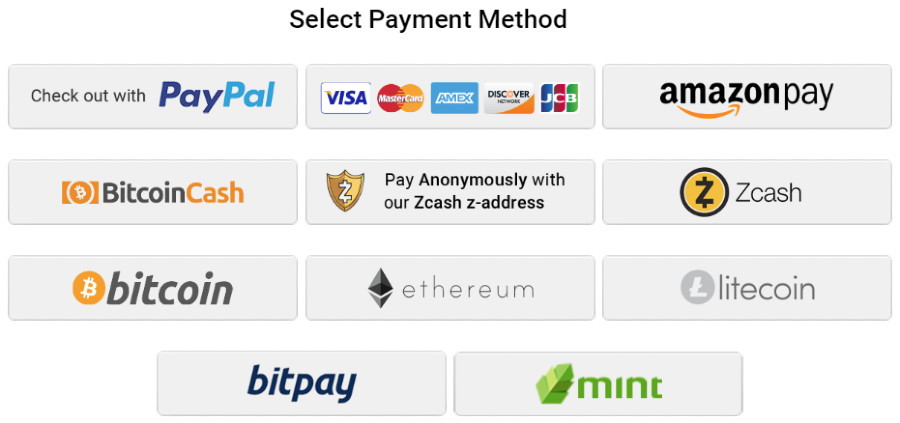
You can also pay with gift cards for most major retailers—a big plus.
Once you’ve paid, you’ll be sent an email with account details:

This actually annoyed me. I chose to pay via PayPal, but Private Internet Access then chose to send details to my PayPal email.
This may sound contrived, but most VPNs let you choose an email first, and I usually choose one different from my PayPal email.
But whatever.
So I went ahead and downloaded the software for my computer:
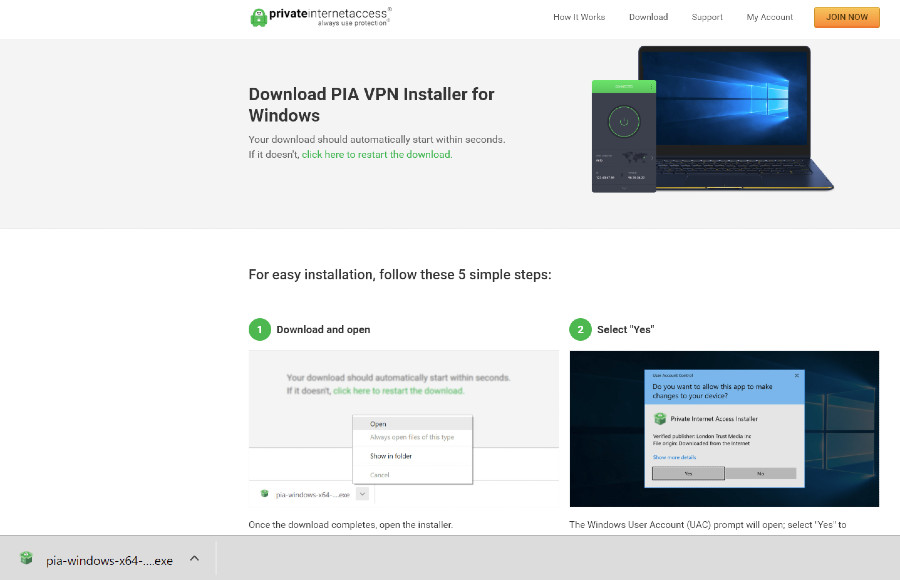
Props to PIA for having SUPER clear and good looking download instructions on the same page.
Though to be honest, I can’t imagine anyone needing help.
And the installation was probably one of the FASTEST that I’ve ever had with a VPN:
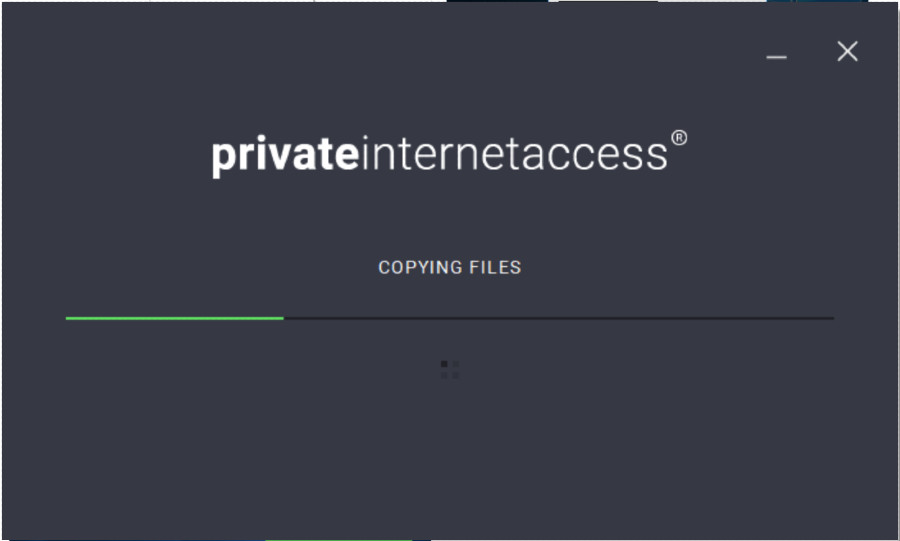
Once it’s been downloaded, you can even take a “tour” of the app before you log in:
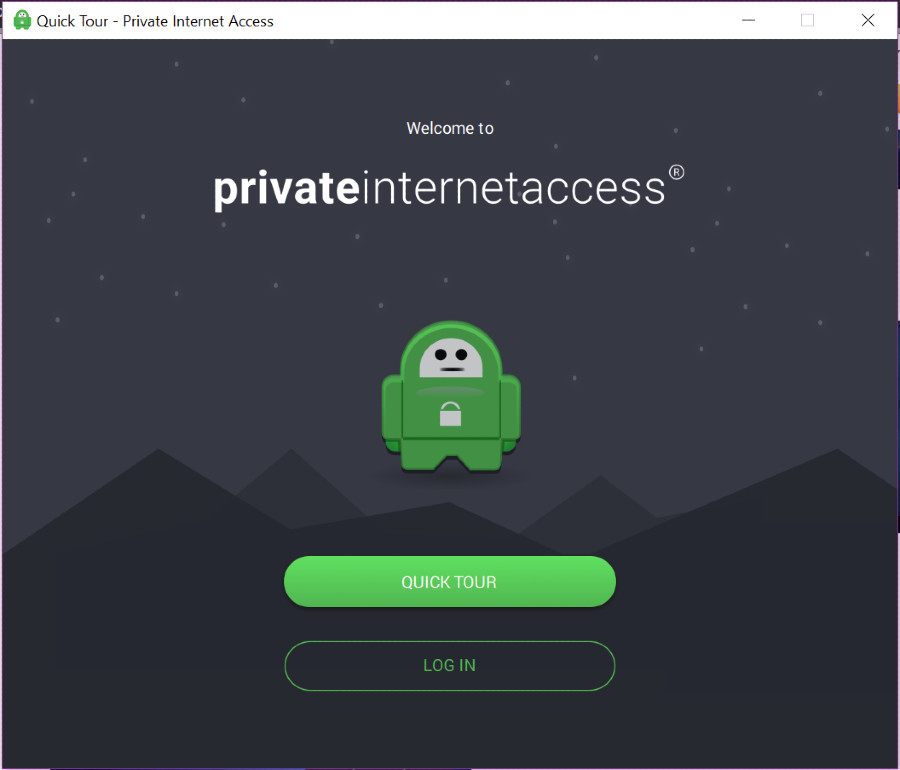
Which I actually haven’t seen before. The tour is actually a pretty cool feature.
If you’re installing this on, for example, your grandparents’ or parents’ computers, this could be a neat way of making them feel comfortable:
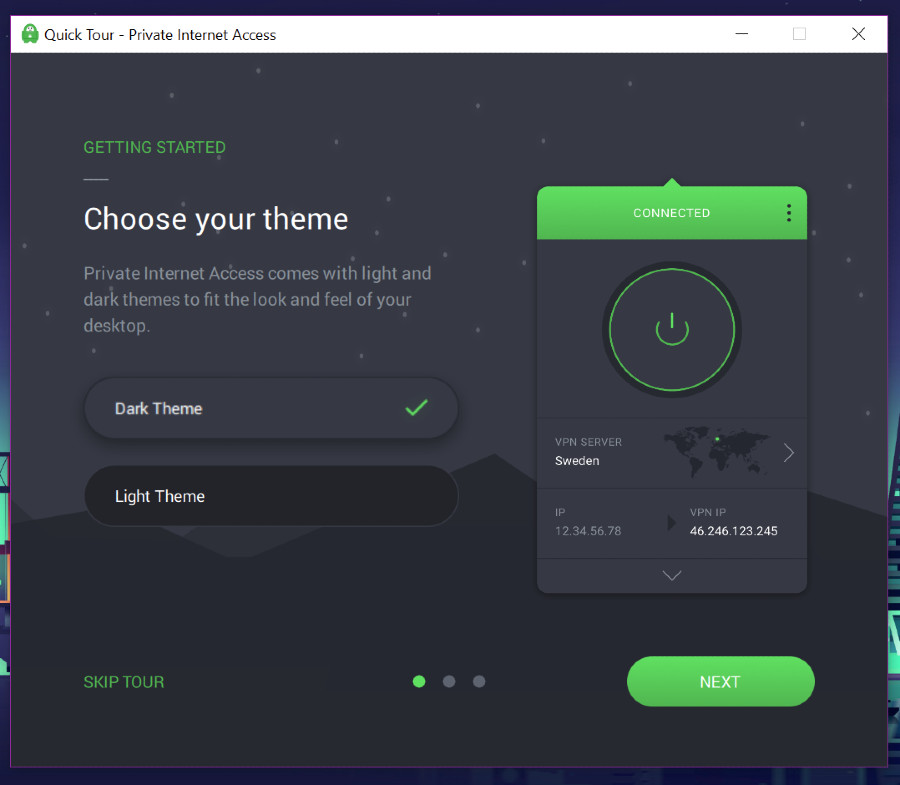
But I did have one problem with the app:
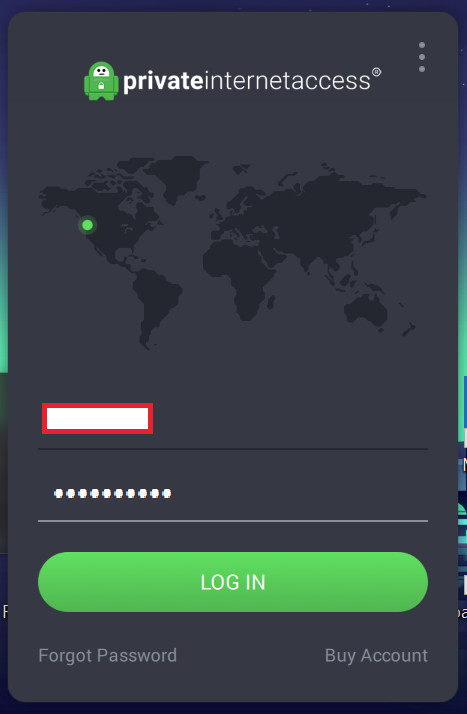
I couldn’t move the window, and whenever clicked outside of the window, it would automatically minimize. I would need to bring it back by clicking the icon in the icon tray.
But it turns out you can easily change this in your general settings (the last option, dashboard appearance, can be switched to “window”)—it’s not a glitch in the app’s design:
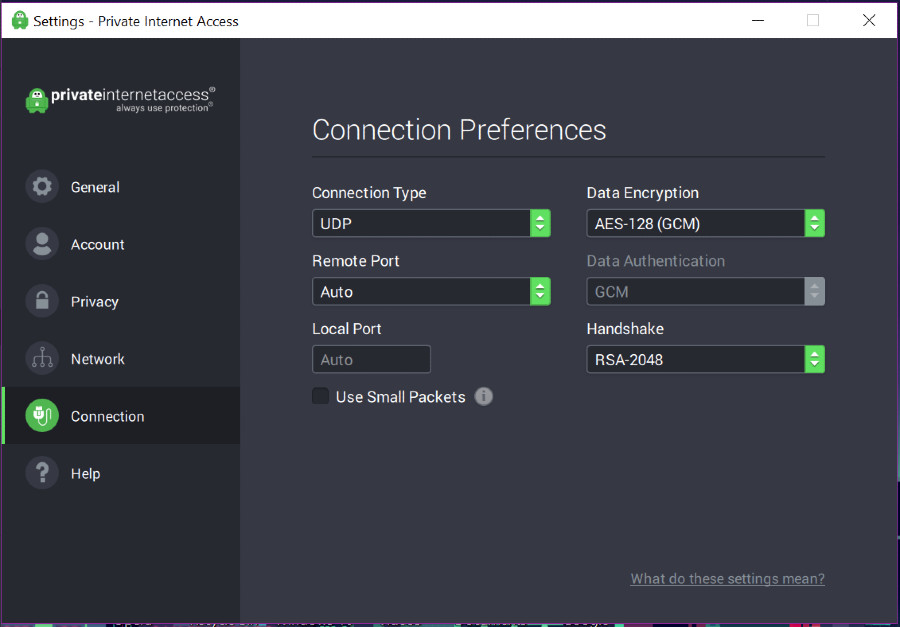
The moment I saw that, I fell in love.
But I’m getting ahead of myself again.
Here’s what the main app looks like:
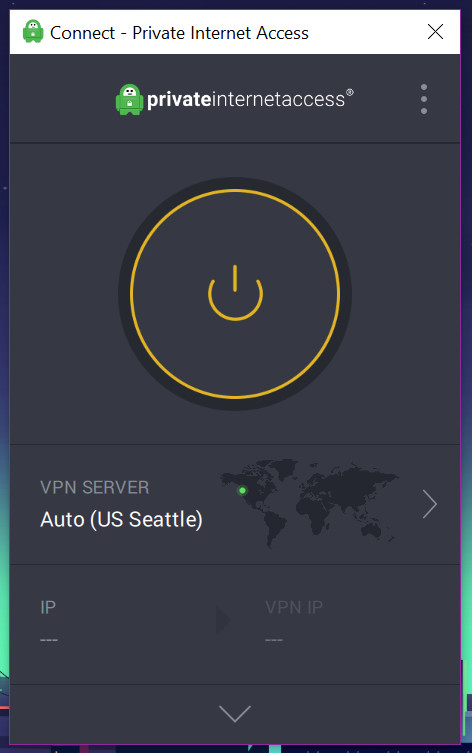
Holy moly. It looks beautiful. To my tastes, at least.
Clicking the arrow in the server section will expand the window into a full location list:
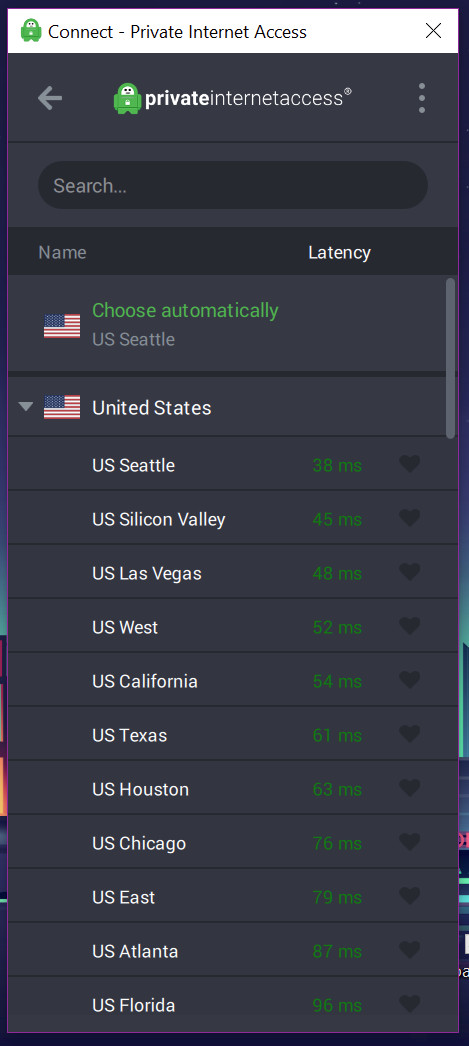
What’s nice is the locations within countries are actually drop-down menus themselves. Meaning clicking on the arrow by a country will close or expand the list of its available locations.
You can sort by name (alphabetically) or latency, you can favorite servers, and you can search them.
Perfect.
But that’s not all that’s built into the app design. See that arrow at the bottom?:

Clicking on it expands the app into this:
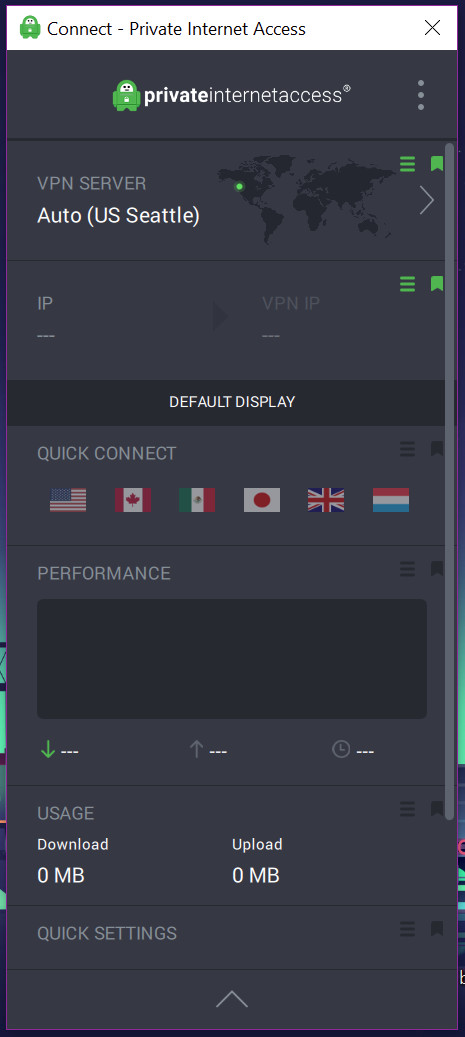
Which is probably the COOLEST thing I’ve seen on a VPN app in a while.
This may not look like something a total beginner would feel comfortable with, but it’s pretty cool and ultimately easy to figure out.
Basically, this is your dashboard.
You can view details about your current connection, access a quick connect menu, and even access quick settings.
But the best part?
It’s CUSTOMIZABLE:
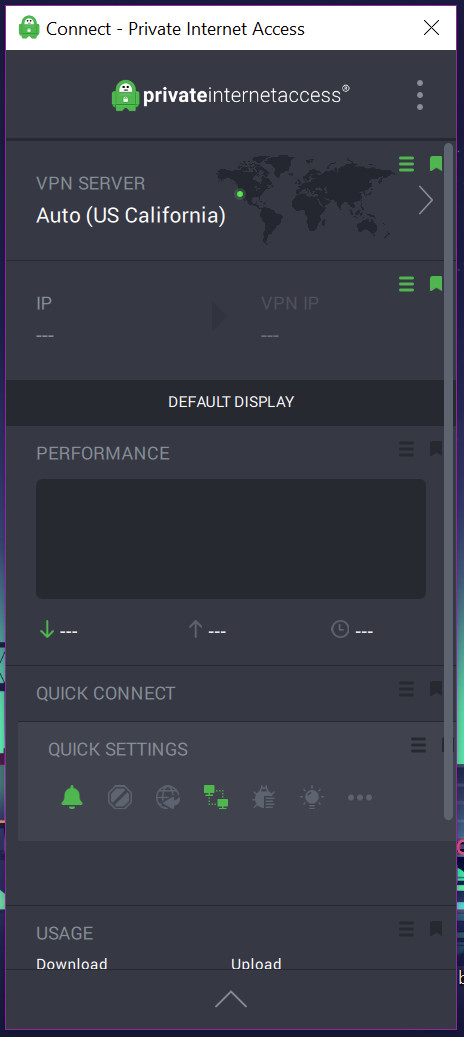
That’s me in the process of MOVING the “quick settings” block above the “usage” block” and over the “quick connect” block.
So you can move all this stuff around to your liking. Put the tedious stuff at the button, the good stuff at the top, and so on.
Your changes can even affect how the app looks when you’ve rolled back the extended dashboard.
This right here is what really sold me on Private Internet Access. Usually I’m just looking at whether or not an app is usable.
Most of the time, they are. And when a VPN can make the software look good, that’s good.
When a VPN can make the software USEFUL—meaning it does a good job of reporting your connection, or makes servers easy to view—that’s really good.
But this? It’s a whole new tier of being able to take control of the app and make it your own.
It’s true that some settings and details will fly over the heads of newbies. And that’s okay—because they can easily ignore it.
The essentials are already there and are easy to use. And like I said, you can design the app to your preferences.
This design function almost feels like a feature, rather than just a user-friendliness thing. Which leads me to the next item:
Pricing and Features
Without a doubt, pricing and features are an area most people have their eye on. While it’s true some people don’t care for features in a VPN, and others are the opposite, I think most people care about price.
And as I’ve said, PIA has a reputation for being more affordable.
So what are the dang prices?
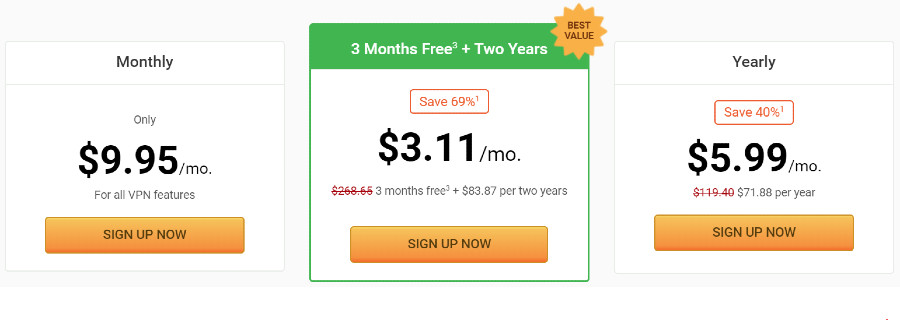
Not bad at all!
The monthly price is about average, but on the lower side. The same is true for the yearly price—to be honest, I was actually expecting the yearly price to be a little lower.
Nonetheless, it’s on the smaller side.
And the price for two years? I think it’s pretty hard to argue about. Including a free three months in addition to the two years, you’d be paying just over $3 a month.
It’s not the cheapest VPN, but that two-year commitment is certainly one of the cheapest.
But now, of course, the question is what we get for the prices.
We already know that performance and ease of use are rock-solid.
What about the features?
Let’s start with the basics. Here’s the server situation:

Hm—I have mixed feelings. On the one hand, well over 3,000 servers is a MASSIVE network.
So that’s really fantastic news. But the locations?
Only 32 countries is a kind of low count. The upside, of course, is that there are more locations per country—something that I think is a really underrated feature.
But that upside doesn’t take away from the blow of only having 32 countries to choose from.
Bigger competitors of Private Internet Access will offer 50 on the lower end, and close to 100 countries on the higher end.
So, win some, lose some. But Private Internet Access still has a lot more to offer:
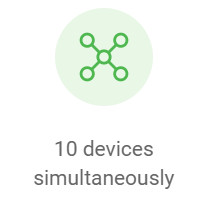
10?! Guys, that’s pretty awesome.
I mean, I personally don’t really use a lot of simultaneous connections, but 10 is a fantastic number when the usual count is FIVE.
And all the other basics that you expect with a premium VPN—unlimited bandwidth, server switching, multiple protocols—are included as well.
And to bring things back to the last section, you saw how customizable the app’s experience is. That alone is a strong feature.
But that’s not all. The settings have some additional features.
For example, this:
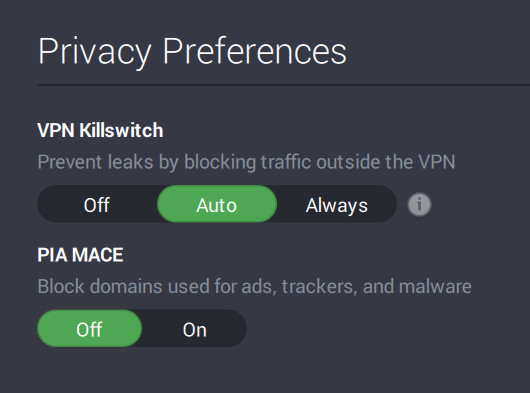
The kill switch, an increasingly common feature, is good to have. Although, I wish Private Internet Access could give the kill switch more flexibility.
PIA MACE is a rudimentary ad-block that’s pretty nice to have handy.
The network settings are pretty short: choose name servers, a toggle to request port forwarding, and a toggle to allow LAN traffic.
The connection preferences have a little more going on:
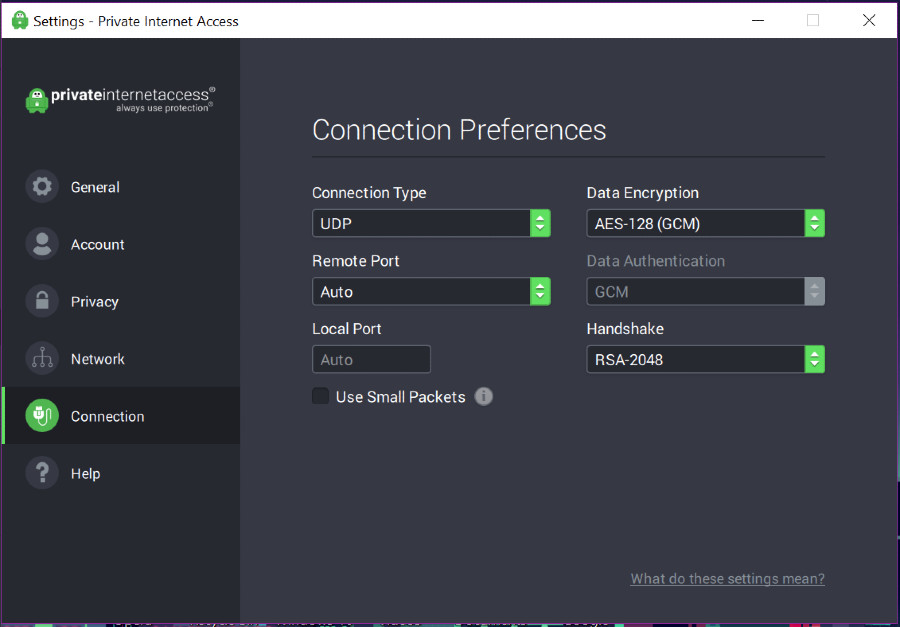
Unfortunately, the default encryption isn’t AES-256 bit. But hey, at least you can choose that option if you want.
For the most part, beginners will probably be a bit put off by these settings, but that’s okay—like I said, they can be left alone.
That mostly covers the features that Private Internet Access offers. To be honest, I was kind of expecting a little more when I first started using it:
I was so in love with the user-interface, that it felt like there should be way more features and settings.
But all things considering, it’s still enough. I wouldn’t say Private Internet Access is on the high-end of features, but it’s certainly above average.
However, those features are pretty solid, and the price is too. If anything, it’s a good compromise between simplicity and complexity.
Hey—we’re not done yet! Next up:
Customer Support
Customer support is kind of like ease of use, in that it’s pretty underrated and serves similar functions.
I’m willing to bet right now that some of you advanced users are getting ready to scroll through this section.
Fair enough, but it should matter to you too! Customer support is going to be your first and best line of defense when your ISP or streaming service cracks down on your encrypted traffic.
Anyway, there are a couple types of customer support: you can contact representatives, or you can read informational material.
I’ll start with the former. If you log into the website’s support page, there’s a “contact us” button in the lower left corner:
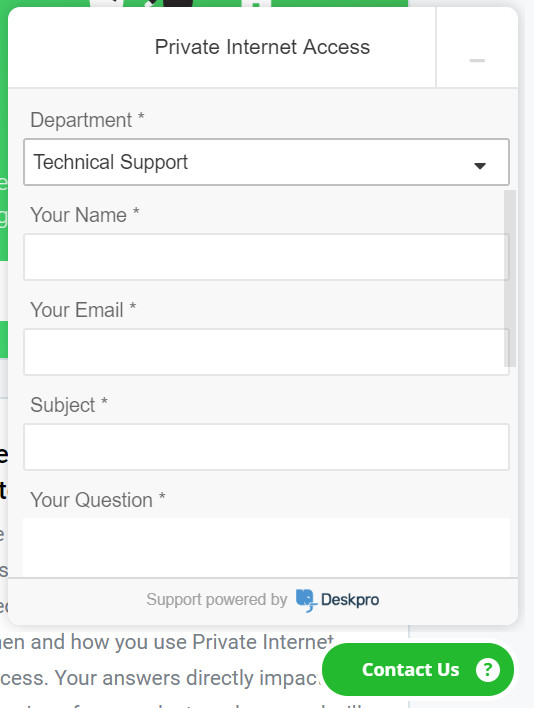
It’s basically a ticket form, because at the time I took the screenshot, it was outside of live chat hours.
Unfortunately, the live chat hours are kind of limited:
It’s only on weekdays, and during working hours. But if that’s what it takes to get quality, then so be it, and it’s better than not having a live chat.
Also unfortunately, you can only choose a ticket in “account” issues or “technical” issues. Obviously those are the two most common, but sometimes you just have miscellaneous requests.
Anyway, it doesn’t take long to fill out the form, and filling out the information presumably expedites the process.
Although the ways in which you can contact reps is a bit limited, the quality of the responses are still solid.
Aside from that, however, you could use PIA’s on-site information. That basically means this:

All things considered, this is one of the more extensive VPN help pages.
The actual knowledge base itself actually has a lot of articles—102 technical articles and 34 FAQs, plus quite a few others.
The guides page is uniquely organized and pretty in-depth:
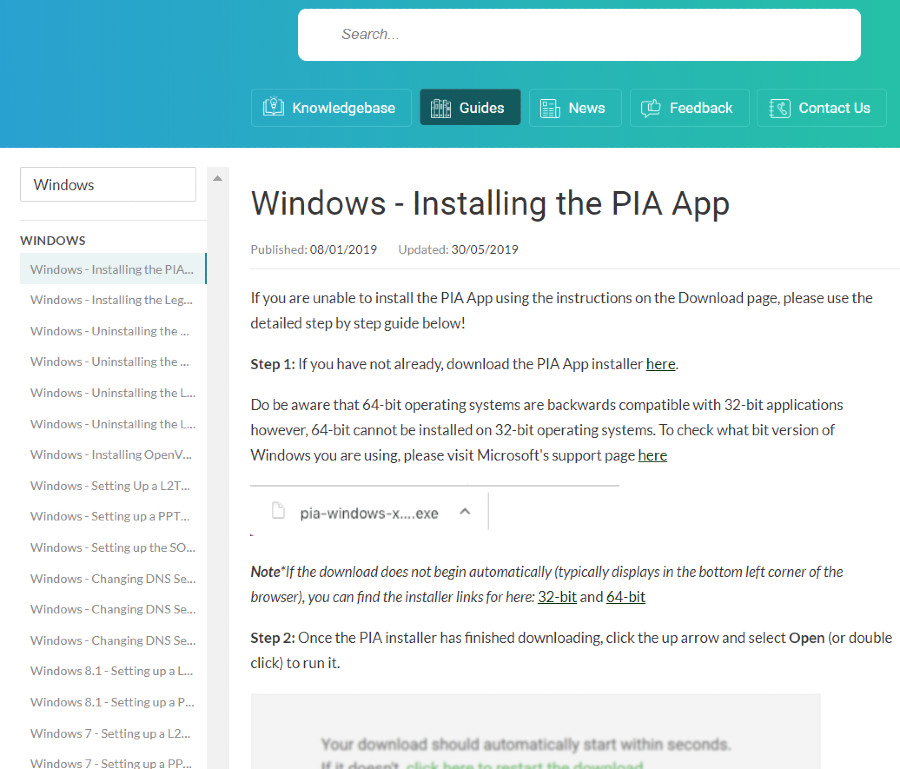
The amount of platforms with support material…dang. It’s certainly one of the best, as far as VPN guide collections go.
The “news” section of the support resources is pretty unique. Most VPNs (and software companies, for that matter) have a blog.
The blogs will sometimes have material useful for customers, but there’s also a lot of bluster involved.
The “news” here is PURELY useful updates on the software. What’s been fixed, what issues are being worked on, what new features are in the works, and so on.
It’s a refreshing thing to see.
In all, Private Internet Access is a bit tilted when it comes to customer support: contacting representatives is decent, whereas the onsite info is downright amazing.
Overall then, it’s strong customer support. But we’ve got one last thing to examine before we can put everything together:
Security and Privacy
Ah, the Achilles’ heel of many VPNs.
Security and privacy are supposed to be what VPNs are good for. And yet, quite a few have been shown to be less than honest or transparent about their practices.
Ultimately, those who want to invest in a VPN for the privacy of it, recognize they’re taking a leap of faith.
Ideally, we want to take as much faith out of the picture as we can—the more we know and can trust, the better.
So let’s start with the basics:
Private Internet Access has a no-log policy, which is standard and what you should expect from basically any VPN you’re paying for.
Unfortunately, this log policy hasn’t been independently verified. This is usually the case, but if a VPN can get its logging policy audited and confirmed, it’s a great sign that they’re trustworthy.
A VPN can still be trustworthy without an audit, but…well, you’ll just have less grounding to trust them.
And believe me, it’s important—a few big VPNs have been caught logging users, or at least being shady with loopholes in their privacy policies.
So we just have to trust Private Internet Access to keep their word, right?
WRONG!
There actually IS some proof of PIA’s no-logs policy:
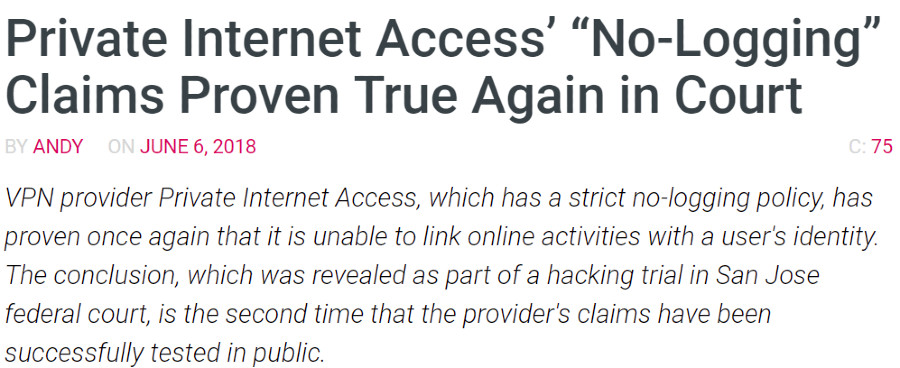
As TorrentFreak detailed, a young man was accused of hacking into some local media websites. The FBI found IP addresses operated by Private Internet Acccess to be involved, and had requested logs from PIA.
There simply wasn’t enough to be given. And, this is the second time PIA has been shown, via court documents, to be living up to its no-logs policies.
This is even more solid than a third party audit. And it makes the numbers in these transparency reports way more believable:
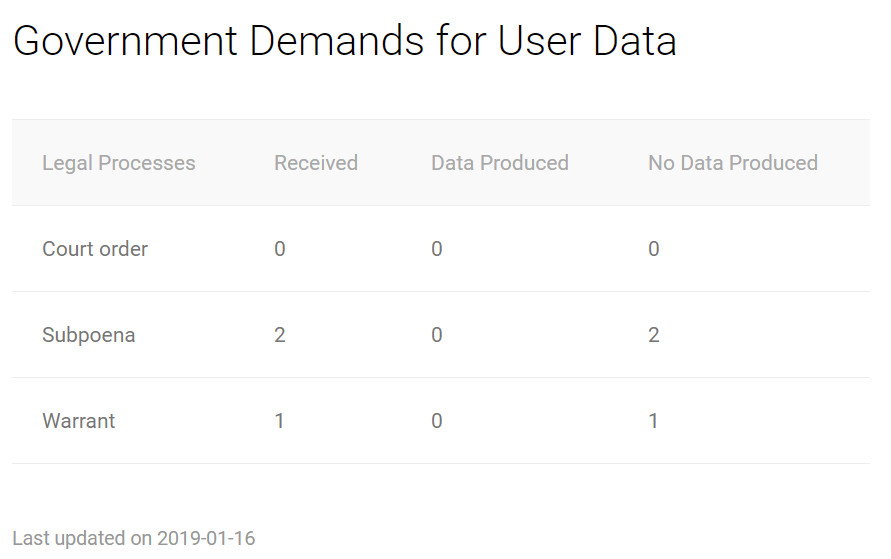
So as far as I’m concerned, Private Internet Access is by default one of the most trustworthy VPNs in terms of logging—that’s just what the evidence shows.
Unfortunately, it’s not all good news:
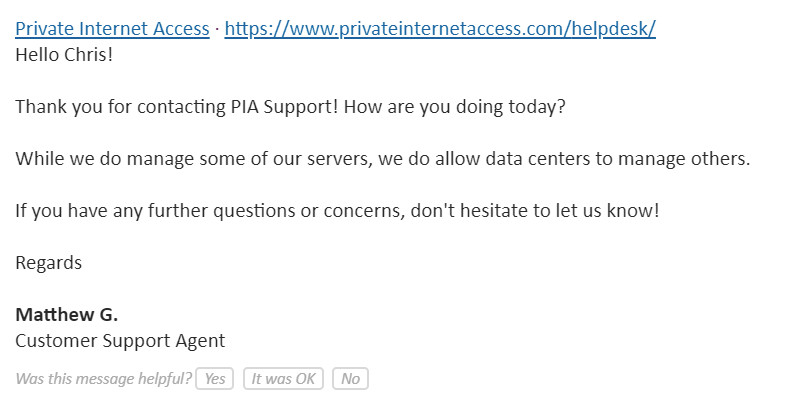
The thing is, Private Internet Access does not wholly manage its servers. Some are handled by third parties.
This is pretty common practice, but it’s generally preferable for a VPN to manage servers on its own.
Why?
Because you’re better off reducing the number of parties involved in this process. It means there’s less room for dishonesty, shady practices, or even bad employees.
Plus, it increases transparency to have one party (the VPN) handling things.
So it’s unfortunate, but it’s not the end of the world by any means.
The other concern I have is the company location—it’s located in the United States, and its parent company is located in London.
Neither the US nor the UK are exactly “good” when it comes to privacy and data.
So the location really is unfortunate. But at the end of the day, the transparency report and court documents go a LONG way.
Because clearly, even when the freaking FBI was involved, Private Internet Access had effectively nothing to hand over when it was legally required to do so.
And so ultimately, I’d say Private Internet Access doesn’t hit all the marks on privacy and security that I want it to…
BUT, it hits the biggest and most important one—the no-logs policy. And that, my friends, makes it one of the few VPNs that can really be considered strong on privacy and security.
Let’s keep these good vibes going:
Pros
- Overall, pretty good performance, including streaming.
- Superb user interface: it strikes a great balance between user-friendliness and user-control. It is a little on the complex side, but a good balance.
- Specifically, the app’s layout can be customized.
- Getting started is very easy. Private Internet Access walks you through the process.
- There aren’t a ton of features, but there are enough. Overall on the better side in terms of features.
- Massive server network.
- A ton of payment methods are available.
- Overall pretty affordable.
- Great on-site resources and information. Probably one of the best among VPNs.
- Well-established no-logs policy. PIA also releases a regular transparency report…with some pretty great numbers.
Cons
- Seems to be slower at handling torrents.
- Very few countries available, despite the large server network.
- Not as simple as some VPNs. Some of the settings tend to be advanced without much explanation.
- Limited live chat.
- PIA doesn’t directly run all of its own servers, and is located in the United States.
Conclusion: Do I Recommend Private Internet Access?
I began experimenting with Private Internet Access thinking it might be overrated. That’s just me—I’m skeptical of popular opinions (yes, this does not make me a fun person).
But Private Internet Access really proved itself in a lot of ways.
So I’ll just be upfront: I totally recommend Private Internet Access to most people interested in VPNs. Which is a high recommendation in my book.
First and foremost, all the basics of a VPN are handled well. The performance is good, the no-logs policy is verified, there are enough locations, the features are decent…and the price is good, too.
And from a user-interface standpoint…I think Private Internet Access is my current favorite. The software looks good and is much more customizable than most VPN apps.
It’s not too hard or too simple. And that’s why I think a wide range of VPN consumers would find it a great experience.
Of course, there are exceptions: some people will want better performance, and quite a few would want way more locations. It’s true that PIA is low on the location count.
Which is why people who only want to unlock content—by streaming or torrenting safely—could probably find a VPN that has way more locations, and is maybe easier or cheaper or faster…or all of those.
Plus, some people may want more robust feature sets or better security assurances, like a better company location and entirely first-party server networks.
Fair enough. But Private Internet Access does a LOT for a lower than average price. It may not be the best in one single thing, but it’s probably one of the best all-rounders I’ve seen in a while.
And again—that app is fun.
So without a doubt, I do recommend Private Internet Access!
And if you’re not sure, that’s fine. Just try it—you can do so risk-free for 7 days!
Write your own review
I’ll admit—even when I like VPNs, I’m usually not this sunny and positive. Was it too much? Have you had a poor experience with Private Internet Access?
Or maybe you loved it, too! Whatever you thought, I’d really like to hear from you. You can leave a review below!

